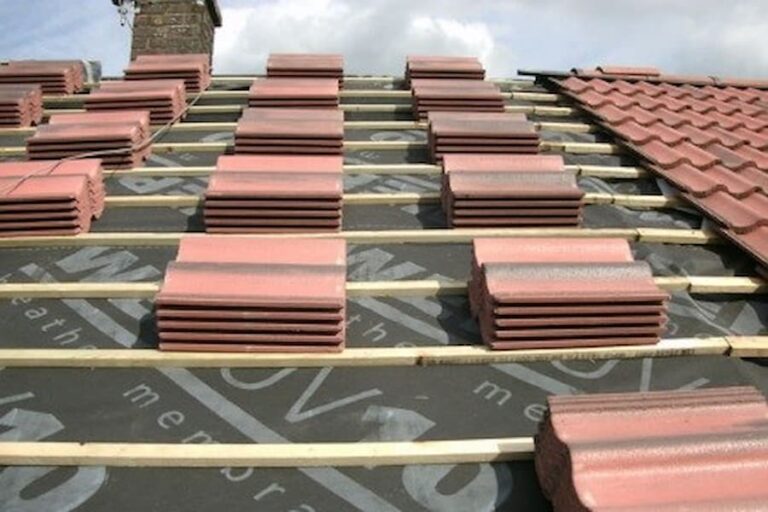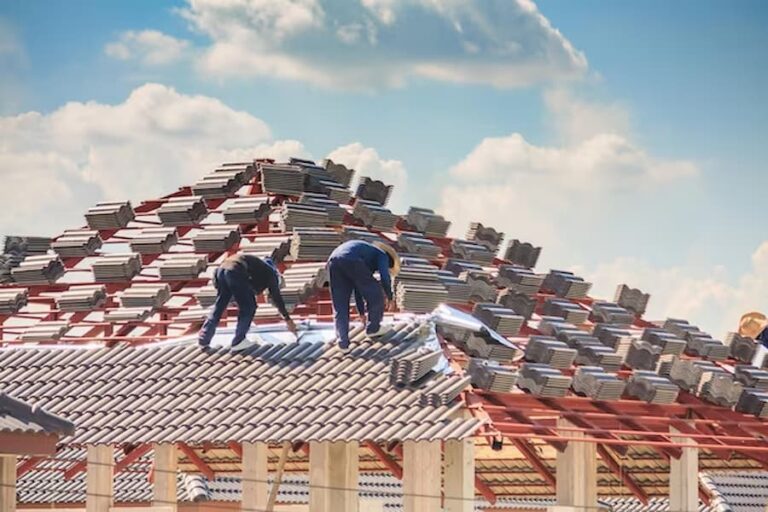Need Gutter Replacement? Read This Guide for the Best Results!
Your home’s gutters are an unsung hero, silently protecting your foundation and exterior walls from water damage. But like any warrior, even the sturdiest gutters can become weakened by time and weather.
So, how do you know when it’s time to trade in your trusty guards for a new set? And what factors should you consider when replacing your gutters? This comprehensive guide will equip you with all the knowledge you need for a successful gutter replacement project.
Signs You Need Gutter Replacement
Just like a suit of armor showing signs of wear, gutters withstanding years of rain and debris will eventually show signs of distress. Here are some key indicators that your gutters are ready for retirement:
- Visible Damage: Cracks, holes, and rust spots are all battle wounds that compromise your gutters’ ability to channel water effectively. These weaknesses can be caused by aging materials, extreme weather conditions, or even improper installation.
- Water Overflow: If you notice water cascading over the sides of your gutters during a downpour, it’s a clear sign they can’t handle the water volume. Overflowing gutters can lead to water damage to your siding, foundation, and even your basement.
- Sagging or Separation: Gutters that droop or pull away from the roofline are like a knight losing his grip on his sword. This sagging can be caused by weakened fasteners, deteriorated fascia boards (the board where the gutters are attached), or the weight of clogged gutters.
- Exterior Damage: Peeling or chipping paint near your gutters, especially along the foundation line, can be a silent scream for help. Leaky gutters can cause this type of exterior damage, and it’s crucial to address the source of the problem before it becomes a major renovation project.
- Basement Leaks: A damp basement during heavy rain isn’t a ghost haunting your house – it’s most likely a sign of faulty gutters or downspouts. When water isn’t properly directed away from your home, it can seep into the basement, leading to water damage, mold growth, and a musty odor.
Gutter Materials and Styles
Now that you’ve identified the need for a change, it’s time to choose your new champions. Gutters come in a variety of materials and styles, each with its own set of advantages and disadvantages. Here’s a breakdown of the most common options:
Materials
- Aluminum: A lightweight, corrosion-resistant, and budget-friendly choice. Aluminum gutters are easy to handle and come in a wide range of colors. However, they can dent more easily than other materials and may not be suitable for areas with heavy snowfall.
- Vinyl: Another affordable option, vinyl gutters are lightweight and durable. They’re resistant to rust and come in various colors. However, vinyl can become brittle in extreme cold and may not be as strong as aluminum or steel.
- Steel: The strongest and most durable gutter material, steel is perfect for areas with heavy rain or snowfall. Steel gutters come in galvanized steel (coated for rust resistance) and stainless steel (rustproof). While highly durable, steel gutters are the most expensive option and can be quite heavy.
Style
- K-style: The most popular gutter style in North America, K-style gutters have a sharp, angular profile that efficiently channels water. They come in a variety of materials and colors and are relatively easy to install.
- Half-round: A traditional style with a rounded profile, half-round gutters offer a classic look. However, they may not be as efficient at handling large volumes of water compared to K-style gutters.
- Fascia: These gutters are integrated into the fascia board, creating a seamless look. Fascia gutters are typically made of aluminum or steel and require professional installation due to their complex design.
DIY vs. Professional Installation
Replacing your gutters can be a DIY project, but it’s important to weigh the pros and cons before tackling the job yourself. Here are some factors to consider:
DIY
- Pros: More affordable, allows for customization, sense of accomplishment.
- Cons: Requires carpentry and DIY skills, safety risks while working on a ladder, potential for improper installation leading to future problems.
Profession
- Pros: Ensures proper installation, time-saving, safety guaranteed, professional can advise on the best gutter materials and styles for your home.
- Cons: Additional cost compared to DIY.
If you’re comfortable working on a ladder and possess basic DIY skills, then tackling a gutter replacement project yourself might be a viable option. However, if you have any doubts about your abilities or safety, or if your home has a complex roofline, it’s best to leave the job to a professional gutter installer.
Cost of Gutter Replacement
The cost of gutter replacement can vary depending on several factors, including:
- Material: Aluminum is the most budget-friendly option, while steel gutters will be the most expensive.
- Style: K-style gutters are generally the most affordable style, while fascia gutters require more complex installation and may cost more.
- Linear footage: The total length of gutter needed for your home will directly impact the overall cost.
- Labor costs: Hiring a professional gutter installer will add labor costs to the project. Rates can vary depending on your location and the complexity of the job.
- Additional factors: Adding gutter guards, leaf filters, or oversized downspouts can increase the total cost.
Here’s a rough estimate of gutter replacement costs based on material:
- Aluminum: $3 – $8 per linear foot (including materials and labor)
- Vinyl: $4 – $10 per linear foot (including materials and labor)
- Steel: $5 – $12 per linear foot (including materials and labor)
Remember, these are just estimates. It’s always best to get quotes from several qualified gutter installers in your area to get a more accurate picture of the cost for your specific project.
Conclusion
Functional gutters are vital for protecting your home from water damage. By recognizing the signs that your gutters need replacement, choosing the right materials and style, and carefully considering DIY vs. professional installation, you can ensure your home is well-equipped to handle the elements for years to come.
Don’t wait until a leaky gutter creates a bigger problem. Contact a reputable gutter installer today for a free inspection and quote. Build In Common can assess your gutter needs, recommend the best materials and styles for your home, and provide a professional installation that will keep your home safe and dry for seasons to come.






